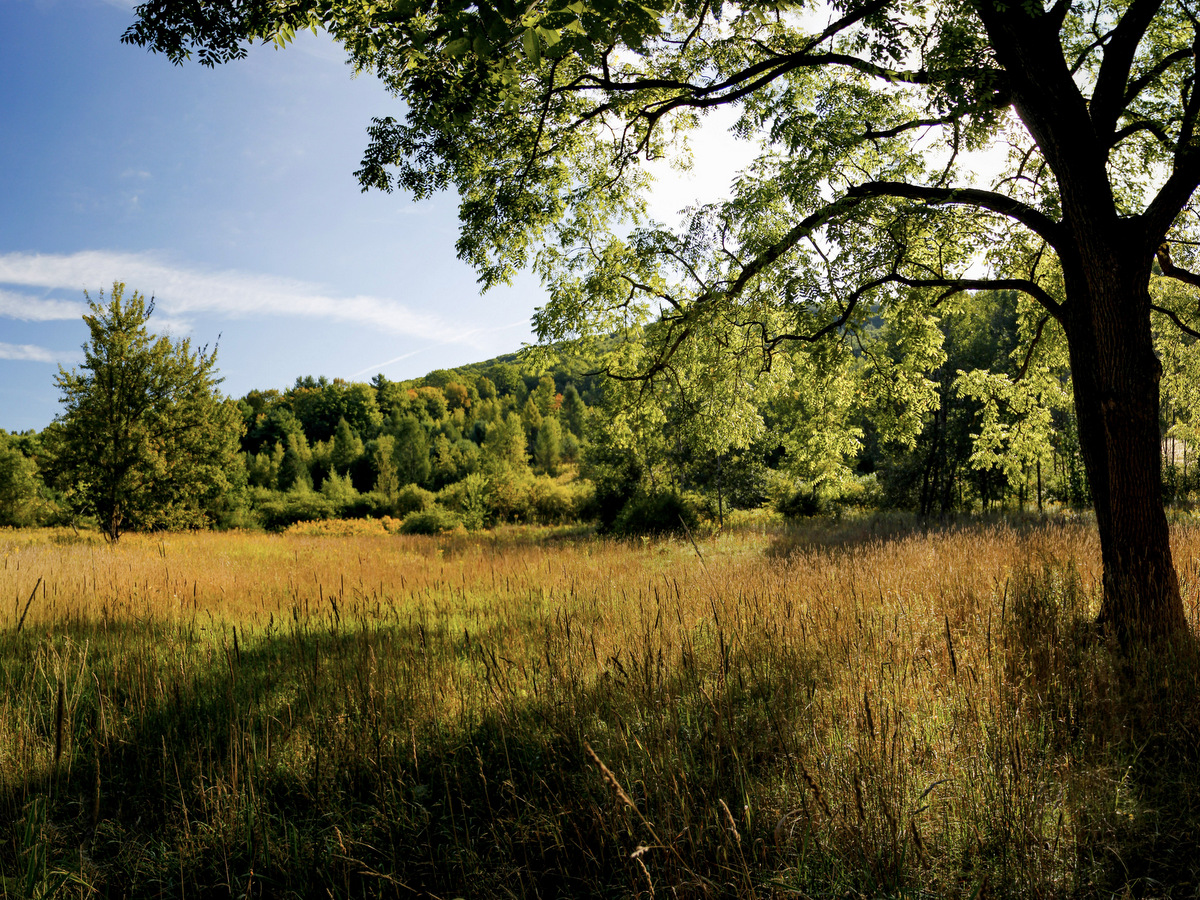There are many ways for invasive plant species to gain a foothold and push out or supersede native species. Some invasive plants—like kudzu or the aptly named mile-a-minute weed—spread like wildfire through rapid growth, others adapt quickly and outcompete the locals for nutrients and other resources, and still others have characteristics that make them hard to eradicate.
But some plants—invasive or not—secrete biochemicals that inhibit the growth and development of neighboring plant species, giving them an advantage over the competition. This survival mechanism is known as allelopathy. The allelochemicals released by these plants are secondary metabolites that are not needed for the primary metabolic processes of the plant.
For example, garlic mustard has become a thriving invasive species in the understory of North American temperate forests in the Northeast and Midwest. Garlic mustard excretes sinigrin, a glucoside also found in broccoli and Brussels sprouts, that inhibits the growth of other plant species and can disrupt soil fungi that help tree roots absorb water and nutrients. This gives the mustard plant a competitive advantage for resources and the ability to more easily displace native flora, thereby reducing biodiversity in many forested areas.
The term allelopathy was coined by Austrian botanist Hans Molisch in 1937. Although the meaning of the term has evolved in the decades since, it generally refers to a chemically driven interaction between plants, or between plants and other micro-organisms. It is the biochemical element that distinguishes it from simple resource competition, and it is not limited to invasive species.
Take the native black walnut, which is an allelopathic tree native to central and eastern North America. It releases juglone, a chemical compound that inhibits respiration in some plant species, into the air and soil through its roots, bark, and leaves. (Interestingly, juglone is also used as a coloring agent in food and cosmetics.) Plants that are susceptible to the toxicity of juglone may experience yellowing leaves, wilted foliage, stunted growth, or die off. This limits the plant species that can survive and grow in close proximity to a black walnut tree.

Photo: Michael Ludgate
Willows also tend to have few other competing plant species in their general vicinity, but they are not considered to be allelopathic. That’s because their competitive advantage is not due to a biochemical release, but rather their voracious consumption of water, which limits the availability of moisture to other nearby plants.
While allelopathy has given a number of invasive species—from eucalyptus to the Chinese “tree of heaven” to knapweed—a leg (branch?) up on native flora in the competition for resources, much of the current research into allelochemicals is finding ways to use their effects in a positive way.
In particular, recent research has been focused on using allelochemicals in sustainable agriculture, primarily as an environmentally friendly tool for weed suppression. Using plants with weed-suppressing allelochemicals as cover crops, mulch, or plantings in a fallow field can help keep weeds in check without the use of synthetic herbicides that can harm pollinating insects and undermine soil and water quality. Example species include rye, sorghum, fescue, winter vetch, and certain rice varieties.
A related strategy is to create natural herbicides using extracts of allelochemicals, though the process of isolating and synthesizing these chemicals can be very expensive. There are few currently available on a commercial scale, but research efforts are ongoing.
Lest you think that allelochemicals are only harmful to other plant species, there are some allelopathic plants that can actually improve growth conditions for their neighbors. Some species of legumes, like the aforementioned winter vetch, can promote nitrogen in the soil—a good thing for plants—while also releasing allelochemicals that inhibit certain weeds and pests. Allelochemicals leached from the box elder can stimulate growth of bluestem grasses, which are commonly grown in hay fields and pasture lands.
We are still scratching the surface in our understanding of allelochemicals and their potential usage in modern agricultural practices. The ability to breed allelopathic plants that can promote crop growth while providing herbicidal, insecticidal, and antimicrobial qualities could go a long way toward improving crop yields and help meet global food security challenges.

